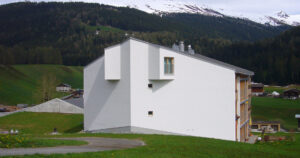Augusto Lima
Margold, Martin; Hughes, Anna L. C.; Dulfer, Helen E.; Barr, Iestyn; Rentier, Eline S.; Laabs, Benjamin; Flantua, Suzette G. A.
Abstract/Description
Mountain regions are essential for understanding Earth’s climatic history, as their cycles of glacial advance and retreat have shaped landscapes, ecosystems, and regional climates during the Quaternary, leaving behind palaeoglacier records that reveal past climate dynamics. These glacier records are particularly important for understanding regional and local climate variations, as mountain glaciers respond sensitively to climatic changes, highlighting the importance of studying their past glaciation. This higher sensitivity is evident in the timing of maximum glacial extent (i.e. local Last Glacial Maximum, LLGM) in mountains, which often occurred outside the global LGM (26–19 kyr BP). However, existing global palaeoglacier databases (e.g., Ehlers and Gibbard, 2004; Ehlers et al., 2011) have not been updated to incorporate glacier extensions reconstructed in the last decade.
To address this gap, we present a new open-access global geodatabase of mountain glacier extents for the LGM. This synthesis integrates ice-extent reconstructions from 213 studies across 271 mountain ranges globally, standardising over 16,300 individual glacier reconstructions into a digital geodatabase covering the period 57-14 kyr BP. We implemented a hierarchical mountain range classification system, compiled metadata from each publication, and linked each reconstruction to its original sources. This effort has updated the state of knowledge in 157 mountain ranges, added over 9,450 new glacier reconstructions, and identified a gap in research in 114 mountain ranges where no updated reconstructions appear to have been produced in at least 13 years.
Our geodatabase is a powerful resource for investigating regional past climate variability, mountain landscape evolution, and ecological impacts of glaciations. It provides glacier masks for validating and refining climate-glacier modelling and offers spatial boundaries for paleoecological reconstructions of mountain ecosystems. Furthermore, it identifies research gaps and understudied regions, guiding future work in Quaternary science. We anticipate releasing the database soon with the corresponding publication and website, along with detailed methodology and guidelines for further use.


